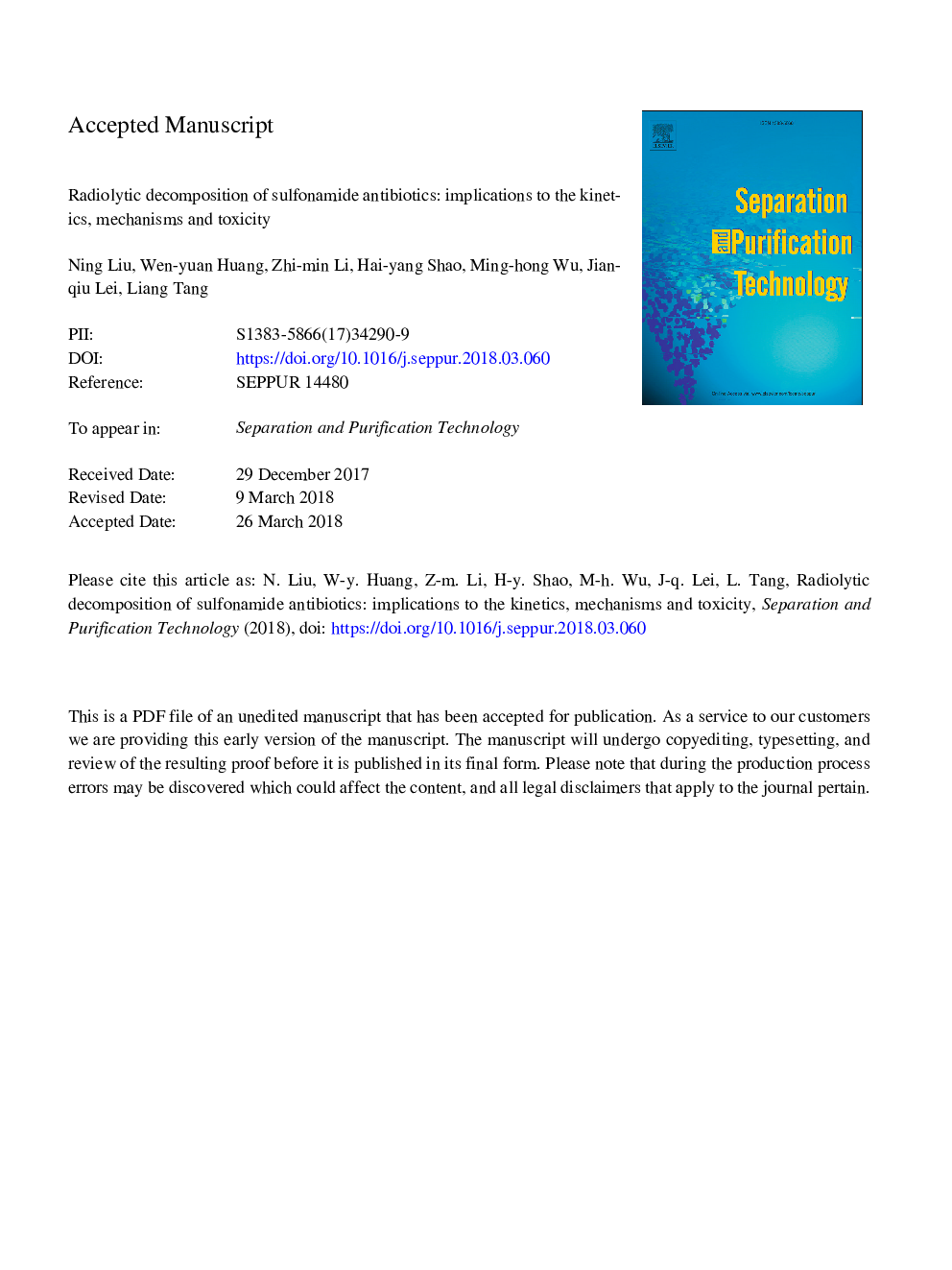| Article ID | Journal | Published Year | Pages | File Type |
|---|---|---|---|---|
| 7043739 | Separation and Purification Technology | 2018 | 23 Pages |
Abstract
Abuse of antibiotics and consequent formation of resistance genes has aroused public concerns on environmental issues. Herein, we employed electron beam (EB) approach to deal with three kinds of sulfonamides, for studying the treatment efficiency and removal mechanisms to these widely used drugs. The results suggested EB could efficiently decompose the parent compounds of sulfonamides, the degradation processes followed pseudo-first-order kinetics, and dose constant k decay exponentially with their initial concentration. The radiolysis efficiency of these sulfonamides with the sequence of sulfathiazole (STZ) > sulfamethoxazole (SMX) > sulfamethazine (SMZ). The highested decomposition efficiencies were achieved in purewater compared to tipwater and surfacewater solutions. Acidic solutions facilitated sulfonamides radiolytic decomposition. An appropriate amount of 5â¯mM H2O2 enhanced sulfonamides degradation. Removal efficiencies were also influenced by inorganic anions in the order of NO2ââ¯>â¯SO32ââ¯>â¯CO32ââ¯>â¯NO3ââ¯>â¯HCO3ââ¯>â¯Clââ¯>â¯SO42â. Hydroxyl radicals were the dominant species, which was proven by radical scavenging studies. Removal of total organic carbon and total nitrogen were also determined to evaluate the mineralization degrees of sulfonamides. The formation of three ionic products and the identification of more than 10 organic intermediates were performed. Combining with the radical effects and intermediates, possible degradation mechanisms of sulfonamides by EB radiolysis were proposed. Moreover, tests of luminous bacteria demonstrated EB could decrease the acute toxicity to the aquatic ecosystems.
Related Topics
Physical Sciences and Engineering
Chemical Engineering
Filtration and Separation
Authors
Ning Liu, Wen-yuan Huang, Zhi-min Li, Hai-yang Shao, Ming-hong Wu, Jian-qiu Lei, Liang Tang,
